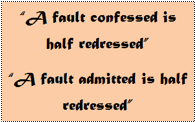How Can we Communicate Effectively ?
Communication 101 – Mission Statements: How can we communicate effectively? “The single biggest problem in communication is the illusion that it has taken place” said G. B. Shaw the Great – and he was on to something… Communication should be simple. You have something to say – go ahead and say it! Yet time and again we find that our message can be ineffective, clunky and sometimes even incomprehensible. Take mission statements for instance; do you know your company’s mission statement? If you do, is it clear? Is it effective? Is it inspiring? Watch the amazing Dan Heath talking about the two criteria any good mission statement should meet. (just click here) OK – so now you know: it has to be concrete and it has to give a reason. In what follows we take a look at four ways of making the way we communicate more persuasive. We will be focusing on how we ‘pitch’ what we have to offer to prospective customers, but the ideas discussed here are more generally applicable.
Over to you: Before moving on, let us stay with Dan Heath for a while. Chances are you do not know your company’s Mission Statement… Well, here is your chance to draft one yourself in the light of Dan Heath’s advice…
 The Serious Side of Subjects: Naturally, you do not read all the e-mails you get, do you? But what is it that might make you open one e-mail but not another? Researchers have looked into this (Wainer, Dabbish & Kraut 2011) – in one study by asking participants to go through their e-mails using the ‘think-aloud method’. It turns out that subject lines are very important. Apparently, the best among them have to do with one of two factors: a) Utility – ‘Does this have something to do with me?’ (e.g. ‘Win a scholarship for the next IATEFL Conference’) or b) Curiosity – ‘What’s this?’ (e.g. ‘The one Web tool to rule them all!’) As Pink (2013) points out, research shows that these two do not mix well, so a successful subject line would have to use one or the other of the two approaches. A third key factor is Specificity. The more specific the subject is, the better. So a line like ‘Feedback and its importance’ is too ‘woolly’ compared to ‘Five top Feedback tips’.
The Serious Side of Subjects: Naturally, you do not read all the e-mails you get, do you? But what is it that might make you open one e-mail but not another? Researchers have looked into this (Wainer, Dabbish & Kraut 2011) – in one study by asking participants to go through their e-mails using the ‘think-aloud method’. It turns out that subject lines are very important. Apparently, the best among them have to do with one of two factors: a) Utility – ‘Does this have something to do with me?’ (e.g. ‘Win a scholarship for the next IATEFL Conference’) or b) Curiosity – ‘What’s this?’ (e.g. ‘The one Web tool to rule them all!’) As Pink (2013) points out, research shows that these two do not mix well, so a successful subject line would have to use one or the other of the two approaches. A third key factor is Specificity. The more specific the subject is, the better. So a line like ‘Feedback and its importance’ is too ‘woolly’ compared to ‘Five top Feedback tips’.
Over to you: Imagine you want to send an e-mail to prospective customers/clients about one of the products/services of your company. How would you phrase the subject line in light of the above?
 Terrific Tweets: All you Tweeters – take heed! Researchers set up a site (‘Who Gives a Tweet?’!!) and asked Twitter users to evaluate other people’s tweets (Andre, Bernstein & Luther 2012).. Their findings were fascinating; first of all, about 65% of all tweets were rated from neutral to bad (read: ‘not worth reading’; hardly surprising really, if Facebook posts are anything to go by!) Buy it was the specific findings which were the most interesting: Worst tweets: Complaints (‘Flight delayed’) / Me Now (‘Just woke up’) / Presence Maintenance (‘Hi all!’). But what about the best ones? a) Tweets asking followers to respond (‘What is the one trait a good teacher should have?’) / b) Info and links (‘Check out this amazing article!’) / c) Self-promotion tweets (provided they offer some useful info! – e.g. ‘Here is my latest clip on YouTube in the “Comedy for ELT” series’!)
Terrific Tweets: All you Tweeters – take heed! Researchers set up a site (‘Who Gives a Tweet?’!!) and asked Twitter users to evaluate other people’s tweets (Andre, Bernstein & Luther 2012).. Their findings were fascinating; first of all, about 65% of all tweets were rated from neutral to bad (read: ‘not worth reading’; hardly surprising really, if Facebook posts are anything to go by!) Buy it was the specific findings which were the most interesting: Worst tweets: Complaints (‘Flight delayed’) / Me Now (‘Just woke up’) / Presence Maintenance (‘Hi all!’). But what about the best ones? a) Tweets asking followers to respond (‘What is the one trait a good teacher should have?’) / b) Info and links (‘Check out this amazing article!’) / c) Self-promotion tweets (provided they offer some useful info! – e.g. ‘Here is my latest clip on YouTube in the “Comedy for ELT” series’!)
Over to you: Pink says the best tweets are 120 characters long (so that others can re-tweet them). Think about your company. Can you create a 120-character tweet informing potential customers/clients about a new product/service your company has launched?
Pitching with Pixar: Pixar is a huge success story in the field of animation entertainment. If your 13 feature films have grossed $ 7.6 bn, that means that you are doing something really well! And what Pixar does well is…tell stories! Stories have enormous persuasion potential (Heath & Heath 2008), which is hardly surprising since some researchers believe we are pre-wired for the story format (Gottschall 2012). So, let us see how Pixar does it. According to Emma Coats, a former Pixar employee, all Pixar films can be reduced to the same basic model: “Once upon a time …………….. Every day, …………….. One day, ……………… Because of that, …………….. Because of that, …………….. Until finally ……………..” (Pixar Touch Blog – May 2011). Yet this format is not only useful to film animators; we can use exactly the same template to tell people about what we have to offer!
Over to you: Think about your company – can you create a ‘story’ explaining how things can change for your customers/clients as a result of using your company’s products/services?
 A Reason to Rhyme: Look at these statements: ‘Life is mostly strife’ and ‘Life is mostly struggle’. Aren’t they virtually identical? And what about these two: ‘Caution and measure will win you treasure’ as opposed to ‘Caution and measure will win you riches’? Well, the message in each pair may be the same but there is in fact a difference. When subjects were asked to rate such statements on how accurately they depicted human behaviour, the rhyming statements got much higher marks!! This is yet another manifestation of the power of a phenomenon known as ‘fluency’ (= ‘ease of processing’). What we have here is a spill-over effect; amazingly, the ease with which we can say/process something makes us think that it is more accurate/truthful! (Mc Glone, & Tofighbakhsh 2000).
A Reason to Rhyme: Look at these statements: ‘Life is mostly strife’ and ‘Life is mostly struggle’. Aren’t they virtually identical? And what about these two: ‘Caution and measure will win you treasure’ as opposed to ‘Caution and measure will win you riches’? Well, the message in each pair may be the same but there is in fact a difference. When subjects were asked to rate such statements on how accurately they depicted human behaviour, the rhyming statements got much higher marks!! This is yet another manifestation of the power of a phenomenon known as ‘fluency’ (= ‘ease of processing’). What we have here is a spill-over effect; amazingly, the ease with which we can say/process something makes us think that it is more accurate/truthful! (Mc Glone, & Tofighbakhsh 2000).
Over to you: Think about your company – can you create a rhyme which describes what it does or what is special about its products or services?
 Last words – Don’t do this: What is wrong with this statement? “We are leveraging our assets and establishing strategic alliances to create a robust knowledge centre…(etc., etc.) – apparently this means: ‘We are consultants’! Time and again people try to impress their audience/readers by means of jargon, convoluted structures and over-elaborate language. The idea is that the writer/speaker will come across as knowledgeable and authoritative and his/her message will consequently seen as more persuasive. Research however shows that this often backfires; the processing difficulty spills over to the content which is perceived as less convincing! (Goldstein, Martin & Cialdini 2007) Here is one of my favourite examples – from an Art Gallery Programme: “…Each mirror imaginatively propels its viewer forward into the seemingly infinite progression of possible reproductions that the artist’s practice engenders, whilst simultaneously pulling them backwards in a quest for the ‘original’ source of referent that underlines Levine’s oeuvre’.” No comments… J
Last words – Don’t do this: What is wrong with this statement? “We are leveraging our assets and establishing strategic alliances to create a robust knowledge centre…(etc., etc.) – apparently this means: ‘We are consultants’! Time and again people try to impress their audience/readers by means of jargon, convoluted structures and over-elaborate language. The idea is that the writer/speaker will come across as knowledgeable and authoritative and his/her message will consequently seen as more persuasive. Research however shows that this often backfires; the processing difficulty spills over to the content which is perceived as less convincing! (Goldstein, Martin & Cialdini 2007) Here is one of my favourite examples – from an Art Gallery Programme: “…Each mirror imaginatively propels its viewer forward into the seemingly infinite progression of possible reproductions that the artist’s practice engenders, whilst simultaneously pulling them backwards in a quest for the ‘original’ source of referent that underlines Levine’s oeuvre’.” No comments… J
[To get a printable version of the text so you can use it with your students, just click here]
[jbox title=”Activity Using The Article”]
| NOTES TO THE TEACHER
This article is meant to be used as a self-contained, integrated-skills lesson on ‘Effective Communication’ with students of Business English. It is mostly based on D. Pink’s book ‘To Sell is Human’ (Chapter 7 – ‘Pitch’). The idea is that the teacher gets the students to read the text paragraph by paragraph. Having read one, they then stop and work together in pairs or groups to apply the research findings by writing something about their company (or, if this is pre-service training, any company they might choose). In this way students derive a double benefit: a) they improve their English and b) they can learn things which can make them more effective in the workplace. Here are some focus questions for each paragraph, together with some sample responses for the students to see (I have used IATEFL as an example). § What is the problem with mission statements according to D. Heath? § What are the 3 key elements when writing Subject Lines? § What 3 kinds of tweet do people say they like best? § What is the ‘Pixar Story Template’? Why are stories so potent? § Why is a rhyming statement more likely to be effective? § What is the problem when using complex language? |
|
| Mission Statement [not the real one]: | IATEFL is a bunch of colleagues who help each other climb Maslow’s pyramid – because we think of ourselves as springboards for our students. |
| Subject Line: | ‘Business English: 5 activities (+ handouts!) that you can use in class tomorrow!’ |
| Tweet: | Listen to this amazing joke (YouTube: Psychology for ELT – Humour) – what level would you use it with? |
| Pixar-style Story: | Once upon a time there was a poor, overworked, underpaid EL teacher. Every day, she had to teach to the test, stick to the coursebook, kowtow to the boss and clean the school as well (echoes of Cinderella here.. J ). One day, she joined IATEFL and discovered that there were thousands of committed professionals out there that she could join, help and learn from. Because of that, she quickly acquired new qualifications and got promoted to senior teacher. Because of that, she started publishing her work, attending international events, she became famous and got invited to various balls. Until finally she won the Nobel Prize for ELT and a pair of glass slippers. |
| A Rhyme: | ‘To help, IATEFL must be big – so do your bit and join BESIG’! |
[/jbox]
[jbox title=”References”]
- Andre, P. Bernstein, M & Luther, K. “Who Gives a Tweet? Evaluating Microblog Content Value” paper presented at the 2012 ACM Conference on Computer Supported Co-operative Work (February 2012)
- Goldstein, N., Martin, S. & Cialdini, R. “Yes! 50 secrets from the science of persuasion” Profile Books 2007
- Gottschall, J. “The Storytelling Animal” Houghton Mifflin 2012
- Heath, C. & Heath, D. “Made to Stick” Random House 2008
- Mc Glone, M. & Tofighbakhsh J. “Birds of a Feather Flock Conjointly (?): Rhyme as Reason in Aphorisms” Psychologcial Science 11, no 5 (September 2000) pp 424-428
- Pink, D. “To Sell is Human” Canongate 2013
- “Pixar Story Rules (One Version)” Pixar Touch Blog (May 2011)
- Wainer, J. Dabbish, L. & Kraut, R. “Should I Open this Email? Inbox-Level Cues, Curiosity and Attention to Email” Proceedings of the 2011 Annual Conference on Human Factors in Computing Systems (May 2011)[/jbox]





